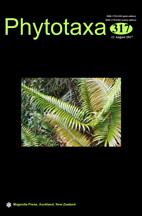Abstract
Heterobasidion amyloideopsis sp. nov., a new poroid wood-inhabiting species from Pakistan, is introduced based on a combination of molecular evidence and morphological characteristics. We generated sequences from the nuclear internal transcribed spacer regions (ITS) and the large subunit ribosomal RNA gene (LSU), the gene encoding the largest subunit of RNA polymerase II (RPB1) and the second subunit of RNA polymerase II (RPB2), focusing on two specimens from Pakistan. We performed phylogenetic analyses with maximum likelihood, maximum parsimony, and bayesian inference methods on two datasets (RPB1+RPB2 and ITS+nLSU+RPB1+RPB2). Both analyses supported the existence of the new species and showed that it formed a monophyletic group within the H. insulare complex as a sister to H. amyloideum. In addition to assessing the origin and divergence of this new species, we focused on the RPB1+RPB2 dataset to perform maximum likelihood based estimation and Bayesian binary analyses. Heterobasidion amyloideopsis is characterized by an annual habit, pileate basidiomata with a rust colored pileal surface, white, obtuse margin, a dimitic hyphal system with simple septate generative hyphae in the trama and clamp connections present on the contextual hyphae, amyloid skeletal hyphae and broadly ellipsoid, hyaline, fairly thick-walled, and asperulate basidiospores.

